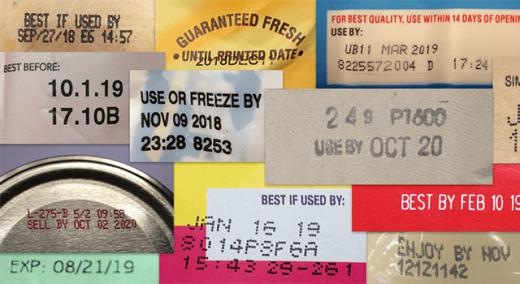Agrifood Technology
In August 2011, a can of Great Value peas joined the nonperishables in my pantry, one of several panic purchases as Hurricane Irene barreled toward my home on the northeast U.S. coast. But the emergency passed, and the can, with its unassuming blue-on-white outline font, remains on my shelf seven years later.
|
ADVERTISEMENT |
Its continued presence raises a dilemma in the form of a clearly legible stamp: “BEST BY 12/31/14.” Should I toss it? Can canned peas go bad? How would I know if they had?
Such confusion, common in many a cupboard, drives an enormous amount of food waste: About 40 percent of food in the United States gets trashed, often due to belief that a gone-by date on a package means the food is not safe.
That’s partly to do with those date stamps themselves. Foods prone to microbial growth, such as raw meat and cold cuts, get a “use by” date assertively worded to indicate that after it, they may be hazardous, and some of these are mandated by state laws (or federal law, in the case of baby formula). But stamps on shelf-stable products—“best before,” “best if used by,” “enjoy by,” “expires on”—reflect peak quality, not safety. And often, both types of date stamps fail to reflect a product’s actual shelf life.
…

Add new comment